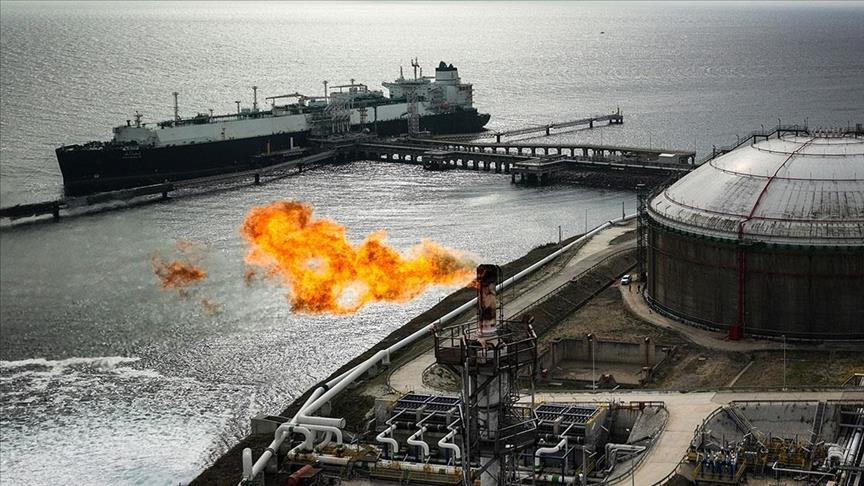The rate of utilisation of LNG terminals by European Union (EU) countries, which turn to renewable energy and liquefied natural gas (LNG) to reduce natural gas imports from Russia, fell to 42% last year.
According to the information compiled from the LNG report published by the Institute for Energy Economics and Financial Analysis (IEEFA), the rate of utilisation of the EU’s LNG terminals was recorded as 58% in 2023.
Last year, the utilisation rate of these terminals fell to 42%. Half of the EU’s LNG terminals had a utilisation rate of less than 40%, including some new FSRUs (Floating LNG Storage and Regasification Unit).
Mukran FSRU in Germany had a utilisation rate of 8% last year, Alexandroupolis FSRU in Greece 9%, Toscana FSRU in Italy 18%, Eemshaven FSRU in the Netherlands 34% and Exemplar FSRU in Finland 38%.
While the utilisation rate of Barcelona LNG Terminal in Spain remained at 12% last year, El Musel LNG Terminal in Spain was used by 14%, Revithoussa LNG Terminal in Greece by 22% and Zeebrugge LNG Terminal in Belgium by 33%.
‘However, European countries are still planning to invest in new LNG import terminals. IEEFA estimates that this could result in Europe’s 2030 regasification capacity having an average utilisation rate of 30%. As new LNG import projects come online and gas consumption continues to fall, IEEFA estimates that Europe’s 2030 regasification capacity will be more than three times the LNG demand in that year,’ said IEEFA.
– Diversifying energy sources renders some utilisation capacity inert
Commenting on the research, Ana Maria Jaller-Makarewicz, an energy analyst at the IEEFA said that at the beginning of the energy crisis in 2022, Europe worked on plans to reduce the dependency on Russian gas and guarantee security of supply.
She said that it was considered necessary to diversify sources and that included increasing LNG imports and at the same time reducing gas demand and increasing renewables deployment.
‘Those plans to increase LNG capacity didn’t consider the impact that the policies on diversifying energy sources could have on LNG demand,’ she said.
Jaller-Makarewicz noted that just last week, the German company Deutsche ReGas announced the termination of the charter contract for the FSRU Energos Power that has been operating since February 2024.
‘It’s understood that it is the only privately financed FSRU terminal in the country,’ she said.
Jaller-Makarewicz said that back in May 2022, the European Commission presented the REPowerEU Plan as a response to the hardships and global energy market disruption caused by Russia’s invasion of Ukraine, to end the EU’s dependence on Russian fossil fuels.
She noted that in 2024, the EU increased its imports of Russian LNG by 18% year on year.
‘France is the biggest importer of Russian LNG, accounting for 39% of Europe’s imports of Russian LNG. Spain and Belgium are Europe’s second and third largest importers of Russian LNG, but while they both reduced their imports from the country, France increased them by 81%. The Dunkerque LNG terminal accounts for 27% of EU imports of Russian LNG,’ Jaller-Makarewicz said.
Jaller-Makarewicz said that SEFE, formerly Gazprom Germania, has a 20-year contract to buy 3.9 bcm of Yamal LNG per year on a Free-On-Board basis to deliver it to Gail India Ltd after transhipping it in EU ports.
‘It’s understood that SEFE is in fact sending some of those volumes to the EU, instead of to Gail,’ she added.

